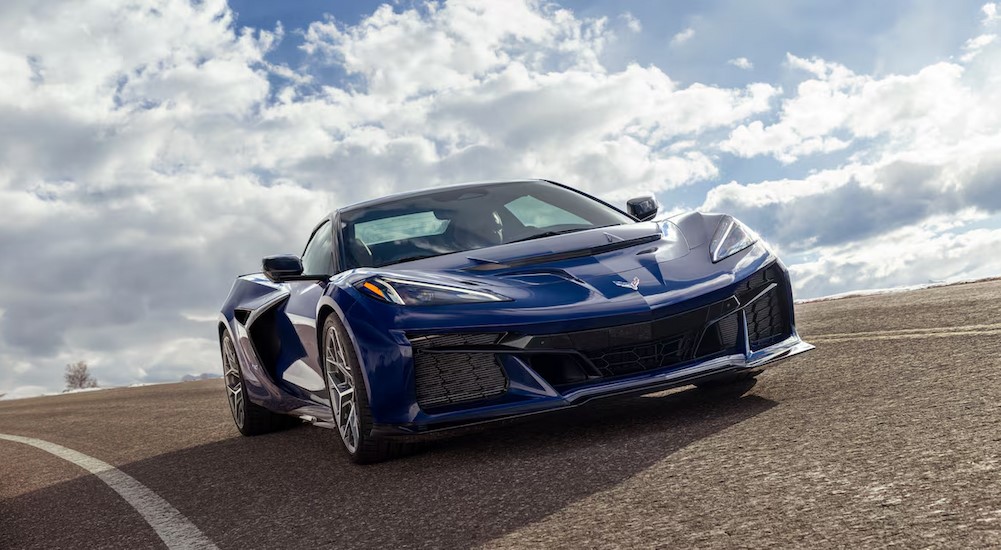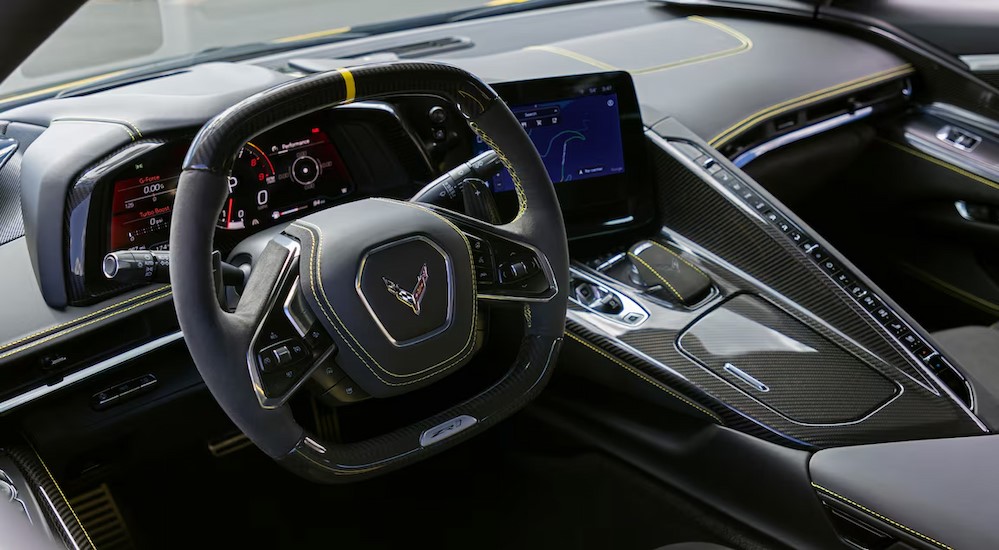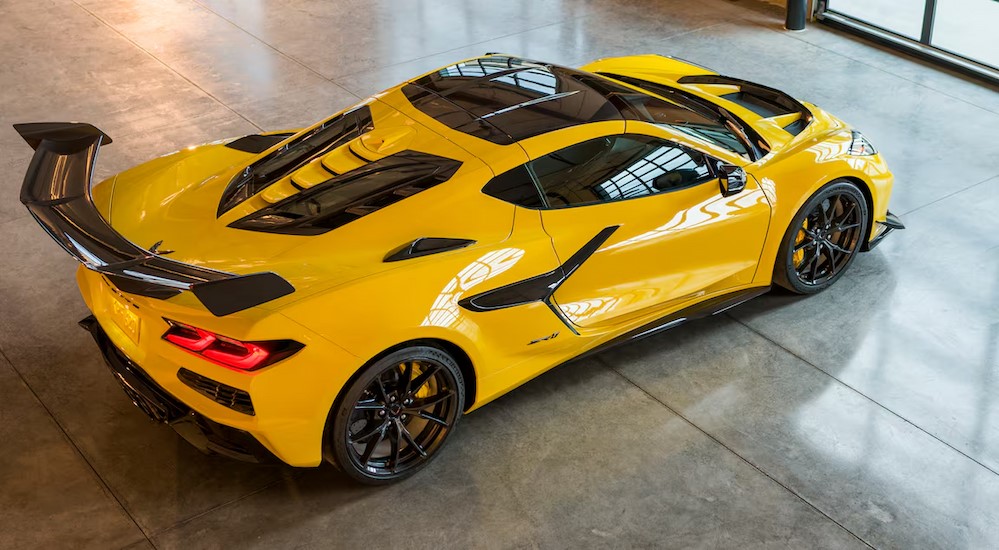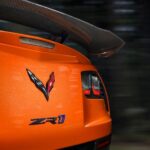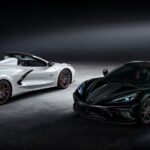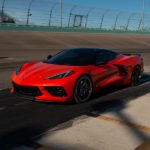A 1,064-hp twin-turbocharged V8, 1,200 lbs of downforce at top speed, a zero-to-sixty-time of 2.5 seconds, a top speed of 215 mph, a wealth of carbon fiber, 828 lb-ft of torque (800 lb-ft of which is available at just 300 RPM), and a starting price of $180,000; these stats call to mind some of the world’s most sought-after supercars from the likes of Lamborghini, McLaren, Porsche, Ferrari, and the like, but I’m actually describing a thoroughly homegrown creation in the 2025 Corvette ZR1.
The American icon returns to the market after a five-year hiatus that must have seemed like an eternity for fans of the Corvette’s most high-performance persona. This nameplate has never had a bad reputation, per se, but the snobs of the auto world have long resisted grouping this legendary model with the European bigwigs who have long dominated the supercar category. The 2025 ZR1 effectively ends that debate, transforming the eighth-gen Corvette into an unhinged beast that arrives at your local Chevy dealer jam-packed with superlatives.
The new ZR1 is not only the first factory turbo-Corvette the world has ever seen, but it also boasts the most powerful V8 ever churned out by an American automaker, according to Chevy. One thing is for sure: it leaves the previous seventh-gen ZR1 in the dust by more than 300 hp and tops its main domestic rival—the Dodge Challenger Demon SRT 170—by 39 ponies. There’s no denying that the 2025 ZR1 is compelling on paper, but can it possibly live up to the hype and earn the vaunted supercar badge? Read on as I make the case for the Corvette ZR1 by seeing how it stacks up in some key categories and learn how Chevy has put any doubts about the model’s supercar bona fides to rest once and for all.
Supercar Scorecard
When called to rule on the 1964 case Jacobellis v. Ohio, Supreme Court Justice Potter Stewart said that while there was no hard-and-fast definition of obscenity, “I know it when I see it.” The same can be said of the modern supercar. While a supercar can generally be described as a very expensive, fast, or powerful car (typically designed with a centrally located engine), the decision to dub a certain model a “supercar” is always something of a judgment call. That said, there are helpful criteria we can use to gauge how the 2025 Corvette ZR1 compares to some of today’s supercar heavyweights…
Power
Expectation: 500-900 hp
Corvette ZR1: 1,064 hp
The Corvette ZR1’s 1,064-hp twin-turbo V8 represents a new high point in American automotive engineering. With that much horsepower and 828 lb-ft of torque under the hood, the 2025 ZR1 has more power than the $5.4-million Mercedes-AMG One and almost as much torque as the heavy-duty Ram 2500 diesel pickup.
The 5.5-liter engine can be credited with much of the ZR1’s power, employing a flat-plane crankshaft, new pistons and connecting rods, unique cylinder head castings, and a secondary port fuel-injection system that keeps the thirsty ‘Vette well-hydrated, but there’s no discounting the influence of the twin turbochargers and their 20 psi of boost. With compressor blades that spin at 1.7 times the speed of sound and turbine wheels made of a unique nickel-based alloy that can withstand temperatures up to 1,900 degrees, the twin-turbo proves just how much of a difference a little (or a lot) of forced induction can make.
In comparison to the ten most powerful modern supercars, the ZR1 holds its own, besting the Tesla Model S Plaid and Porsche Taycan Turbo GT and coming in 6 hp shy of the McLaren Speedtail. The gulf between the McLaren and the seventh-place 1,600-hp Koenigsegg Jesko Absolut is considerable, but the Corvette ZR1 holds fast at the foot of this list.
Zero-to-Sixty
Expectation: Under 3.0 seconds
Corvette ZR1: 2.5 seconds (est.)
Any model worth the supercar tag can speed from zero to sixty in under three seconds, providing the sort of straight-line acceleration that will have the driver’s noggin planted firmly against the back of the headrest. While Chevy has yet to release the 2025 Corvette ZR1’s formal zero-to-sixty time, Motor Trend estimates that this Chevy will be able to get up to speed in as fast as 2.5 seconds.
That’s certainly believable—if even a little bit pokey—when you consider the fact that the Corvette Z06 can accomplish the same feat in around 2.6 seconds despite trailing the ZR1 by 394 hp. Chevy has been a little more forthcoming about the ZR1’s quarter-mile time, which it estimates will be well under the 10-second mark, and this Corvette is even a standout at higher speeds, with an 80-to-200-mph time of 24.5 seconds.
These are some spelling numbers to be sure, but how do they compare to the rest of the supercar horde? That 2.5-second figure puts the Corvette ZR1 in some rarefied company, matching the zero-to-sixty time of the 2009 Bugatti Veyron 16.4 Grand Sport, 2014 Ferrari LaFerrari, and 2014 Koenigsegg One:1 while besting the 2009 Pagani Zonda R by 0.1 seconds. While these models might be a little older, it’s also important to remember that the ZR1 rings in at a fraction of the cost of these $1 million-plus models.
Top Speed
Expectation: 250 mph
Corvette ZR1: 215 mph
Top speed is another solid metric when trying to test a model’s supercar potential. The 2025 ZR1 might be the fastest Corvette in history, but it falls a little short when compared to some of its supercar contemporaries. With a top speed of 215 mph, the ZR1 fails to crack the 250 mph mark, which is the new average in the supercar segment.
That’s not to say the ZR1 is a slouch by any means; it only trails models like the Bugatti EB110, SS Dauer Lightweight, Mercedes CLK GTR Super Sport, and McLaren F1 by 15 to 25 mph, but a couple dozen mph can make all the difference when you’re looking to earn some bragging rights on the track.
Weight
Expectation: 2,700-3,700 lbs
Corvette ZR1: 3,760 lbs (est.)
Horsepower, torque, and zero-to-sixty times are all useful ways to judge a supercar, but one of the most compelling statistics might be a vehicle’s power-to-weight ratio. Even the most powerful engine won’t help a car tear up a track or set a new land speed record if it’s paired with an overly hefty body, which is why automakers usually try to cut as much weight as possible when designing their supercars. This is usually accomplished through the use of lightweight materials—specifically carbon fiber.
Chevy has loaded the ZR1 with a generous allotment of the stuff, offering a carbon fiber roof, wheels, and an optional aero package that adds front dive planes, a Gurney flap, and a rear wing, which drastically reduce the Corvette’s weight while adding 1,200 lbs of downforce to the equation. Add it all together, and you’ve got a ZR1 that weighs in at just 3,760 lbs, which, when divided by the car’s considerable horsepower, gives you a power-to-weight ratio of around 580 hp per ton.
That number puts the likes of the Bugatti Veyron (474 hp/ton) and the Porsche 918 (485 hp/ton) to shame, though it’s nowhere near as good as the Koenigsegg One:1 (986 hp/ton) or the current leader in the Hennessey Venom GT2 (1,230 hp/ton). As far as mass-market models are concerned, the ZR1 is 1,000 lbs lighter than the Tesla Model S Plaid or Lucid Air Sapphire, clocking in just 60 lbs above the generally accepted supercar weight range of 2,700 to 3,700 lbs.
Price
Expectation: $300,000-$2,000,000
Corvette ZR1: $180,000-$205,000
A supercar’s price is, for better or worse, one of its defining characteristics. The 2025 ZR1 might be the most expensive production Corvette ever assembled, but it’s a relative bargain in a supercar segment where the average higher-volume models retail for around $250,000, and the low-volume brands run their prices into the millions. Cars from McLaren, Ferrari, and Lamborghini might be well outside the budget of the typical driver, but they actually represent the lower end of the spectrum at $200,000 to $400,000.
Ultra-specialty producers like Buggati and Koenigsegg churn out as few as 40 to 80 units per year, which helps to explain why their vehicles tend to carry seven-digit price tags. The 2025 Corvette ZR1 is expected to start around $180,000, though that number could rise as high as $205,000 when opting for the higher trims or adding the high-performance ZTK package. It’s a high enough price to allow the ZR1 to be taken seriously by supercar purists but not so high as to price out long-time Corvette fans who want to experience a piece of Chevy history.
The Corvette ZR1 Supercar
I’m confident in saying that the 2025 Corvette ZR1 belongs firmly in the supercar category. One could make a strong case that the 2019 version already proved itself worthy of the title, but Chevy has left absolutely no doubt this time around, doubling down on everything that made the prior ZR1 such a fun drive to deliver a domestic supercar that can go toe-to-toe with many of its European rivals.
From its uber-powerful engine and blistering zero-to-sixty time to its twin turbochargers and a full suite of carbon fiber components, the ZR1 hits all the supercar prerequisites while remaining [comparably] accessible to the average driver. In fact, aside from the price, one could even make an argument that the Corvette ZR1 is edging its way into hypercar territory. It might not get the love of some of the category’s German, Italian, and British stalwarts, but performance—not pedigree—is what ultimately defines any supercar.
